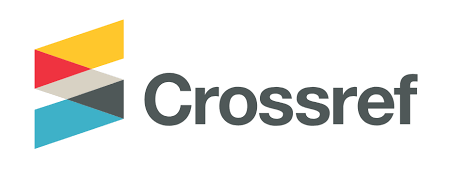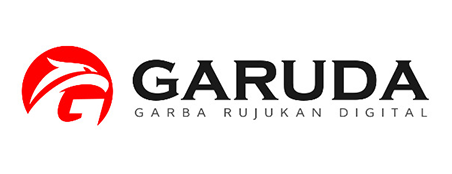UPAYA PROMOTIF DAN PREVENTIF PENCEGAHAN KECELAKAAN KERJA TOKO KERUPUK CAMILAN HASIL LAUT
Keywords:
Promotive, Prevention, Occupation Safety and HealthAbstract
The work accident rate in Indonesia is still relatively high and tends to increase every year, supported by data from international and national institutions showing an increase. The implementation of regulations regarding Occupational Health and Safety is expected to be able to reduce or prevent accidents that result in injury, however, there are still many workplaces that have not implemented the K3 concept properly and correctly, either from superiors who do not provide enough information or employees who are reluctant to use it. The aim of this community service is to provide education to the community in implementing K3 in the seafood shop environment. Community service is carried out directly in 2 stages, the first is conducting an assessment. This assessment can be concluded that the seafood snack shop has not implemented occupational health and safety in its shop environment. The second stage was carried out by providing education to shop owners regarding the use of basic PPE when working. In the initial discussion session, a question and answer process was carried out first regarding obtaining information about K3 knowledge, then providing material related to the concept of K3, personal protective equipment that can be used, the purpose and function of K3 tools, after education is carried out, it is followed by a practical session on installing PPE which can be used to prevent work accidents. After providing education, there was an increase in the shop owner's response and showed an excited attitude as evidenced by the many questions asked by the shop owner. This activity can increase shop owners' understanding regarding the importance of using PPE, so that its use can be continued.
Downloads
References
Badri, A., Boudreau-Trudel, B. and Souissi, A. S. (2018) ‘Occupational health and safety in the industry 4.0 era: A cause for major concern?’, Safety science, 109, pp. 403–411.
Bernier, T. et al. (2021) ‘The use of information and communication technologies by sex workers to manage occupational health and safety: scoping review’, Journal of medical internet research, 23(6), p. e26085.
Çalış, S. and Büyükakıncı, B. Y. (2019) ‘Occupational health and safety management systems applications and a system planning model’, Procedia Computer Science, 158, pp. 1058–1066.
Evans-Brown, M. and Sedefov, R. (2018) ‘Responding to new psychoactive substances in the European Union: early warning, risk assessment, and control measures’, New Psychoactive Substances, pp. 3–49.
Hargreaves, S. et al. (2019) ‘Occupational health outcomes among international migrant workers: a systematic review and meta-analysis’, The Lancet Global Health, 7(7), pp. e872–e882.
Ilbahar, E. et al. (2018) ‘A novel approach to risk assessment for occupational health and safety using Pythagorean fuzzy AHP & fuzzy inference system’, Safety science, 103, pp. 124–136.
Min, J. et al. (2019) ‘The fourth industrial revolution and its impact on occupational health and safety, worker’s compensation and labor conditions’, Safety and health at work, 10(4), pp. 400–408.
Oliver, K. and Cameron, B. (2020) ‘Occupational health nursing’, in Nursing in Australia. Routledge, pp. 261–267.
Paula, D. P. et al. (2021) ‘Integrating adverse effect analysis into environmental risk assessment for exotic generalist arthropod biological control agents: a three-tiered framework’, BioControl, 66(1), pp. 113–139.
Ramesh, R. et al. (2017) ‘Hazard identification and risk assessment in automotive industry’, International journal of ChemTech research, 10(4), pp. 352–358.
Sanongdej, W. et al. (2018) ‘Development and Effect of Video Media Combined with Scenario on Knowledge and Self-Confidence in Practice of Occupational Health Nursing for Nursing Students’, Ramathibodi Nursing Journal, 24(1), pp. 94–107.
Tchiehe, D. N. and Gauthier, F. (2017) ‘Classification of risk acceptability and risk tolerability factors in occupational health and safety’, Safety science, 92, pp. 138–147.
Tremblay, A. and Badri, A. (2018) ‘Assessment of occupational health and safety performance evaluation tools: State of the art and challenges for small and medium-sized enterprises’, Safety science, 101, pp. 260–267.
Tukayo, I. J. H. and Hardy, S. (2020) ‘The Comparison of Work Productivity Between Nurses with Insight of Occupational Health Nursing (OHN) and of Those Without It’, Jurnal Keperawatan, 11(2), pp. 127–134.
Yanar, B., Lay, M. and Smith, P. M. (2019) ‘The interplay between supervisor safety support and occupational health and safety vulnerability on work injury’, Safety and health at work, 10(2), pp. 172–179.
Downloads
Published
Issue
Section
License
Copyright (c) 2023 EJOIN : Jurnal Pengabdian Masyarakat

This work is licensed under a Creative Commons Attribution-ShareAlike 4.0 International License.









